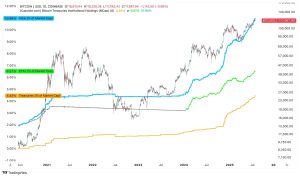
Following Russia’s invasion of Ukraine, crypto helped fund logistics on both sides.
Crypto fuel the war between Russia and Ukraine

On 24 February in Ukraine, as a result of the Russian invasion, the war between the two countries that began eight years earlier experienced a tremendous new chapter.
In the eyes of the public, dismay immediately prevailed as to how a war of such proportions could still take place today, and on Europe’s doorstep at that.
The destruction it has wrought, the military and civilian energies expended, the weapons and related supplies generate exorbitant costs even in terms of food supplies and commonplace medicines.
A recent study by Chainalysis has shed light on how Russia, through pro-Russian organizations, has obtained a hefty sum that stands at $2.2 million.
The decidedly respectable amount goes toward the expenses that the war machine imposes such as meals, logistics, weapons or medicine for the wounded, but it is tiny compared to the amount of donations received in digital currencies from the buffer state.
Ukraine, in addition to receiving out-of-pocket aid in Ethereum from Vitalik Buterin himself, or, for example, from Visa, the world’s most popular credit and debit card operator, has seen huge amounts of Bitcoin and other currencies flowing into its pockets, figures running into the hundreds of millions of dollars.
The financing action of digital currencies has not only been useful in enriching one party rather than the other, but also because of the traceability and transparency with which it is characterized.
Such a transparent and functional method has contributed to the detection of pro-Russian cells and their dismantling.
Half of the donation collection accounts publicly solicited support for militias located in Ukraine’s Donbas region, particularly Donetsk and Luhansk.
The 54 organizations, which in total have accumulated $2.2 million in crypto, have accumulated mainly BTC and ETH, but also Tether, Litecoin, and Dogecoin.
Donations in favor of the two factions
The crypto donations requested by these organizations, mainly through social media, were made with texts such as:
” […] We only have 150 thousand rubles left to collect for a drone that will be able to bring” gifts “to the locations of our Ukrainian “friends”. We hope to be able to shoot it on video and delight you with interesting shots”.
Or others preferred to send real shopping lists, as in this case:
“Hello dear friends! Once again we have brought a cargo match to our fighters. Our car arrived on July 16, but the minutes are only being drafted now, as we have not had time and communications. This time we have brought: […]”.
Mentioning a long list of weapons, medicines, foodstuffs and logistics.
Investigators also detected probable sanction affiliations to donation accounts that can be traced back to people already reported to authorities.
Furthermore, cryptocurrencies have been an important tool in tracing all those channels that lead the Russian government to evade sanctions through the use of digital currencies, which actually are a dead-end path as they are easily traced and stopped.
The post The war is being funded also through crypto appeared first on The Cryptonomist.





















